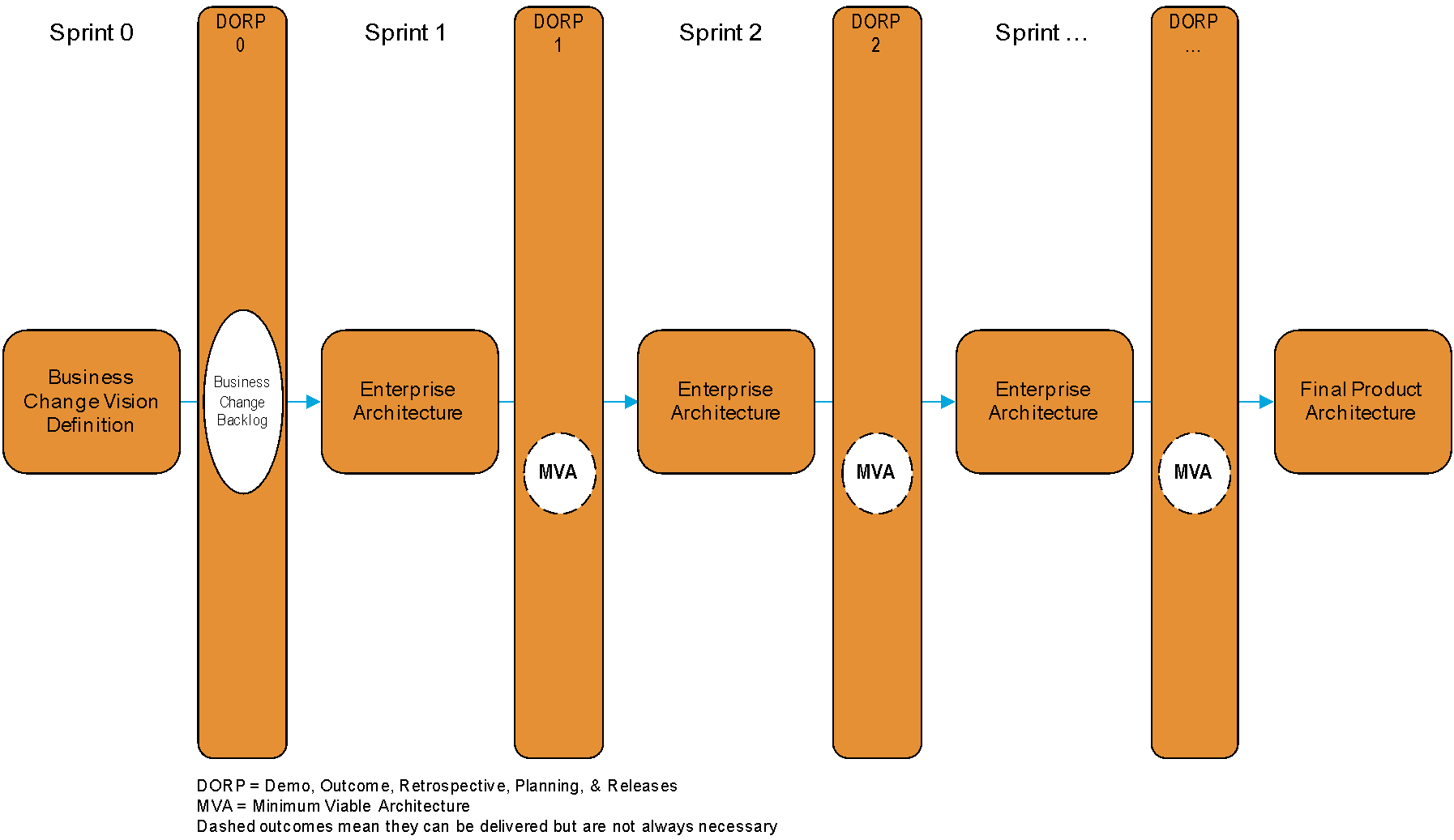Introduction
In today’s rapidly evolving business landscape, agility is key to staying competitive. Agile methodologies have revolutionized the way organizations approach project management and development, emphasizing flexibility, iterative progress, and continuous improvement. The TOGAF (The Open Group Architecture Framework) Architecture Development Method (ADM) can be adapted to support Agile practices, particularly through the implementation of Agile sprints. This guide will walk you through the process of integrating Agile sprints with TOGAF, providing practical examples and insights to help you achieve agility in your enterprise architecture efforts.
Understanding Agile Sprints
What is Agile?
Agile is a methodology that emphasizes flexibility, collaboration, and customer feedback to deliver value quickly and efficiently. It allows teams to adapt to changes swiftly, ensuring that the final product meets evolving business needs.

What is a Sprint?
A sprint is a short, time-boxed period during which an Agile team works to complete a set amount of work. Sprints are fundamental to Agile methodologies, enabling teams to deliver working solutions iteratively and incrementally.
Key Concepts in Agile Sprints
-
Minimum Viable Architecture (MVA): Defines the minimum architecture needed to deliver business value. It focuses on creating a functional and valuable architecture with the least complexity.
-
Iterative Development: Agile architecture is developed iteratively, allowing for continuous feedback and adaptation. Each sprint delivers incremental value, contributing to the overall architecture.
-
Learning and Adaptation: Sprints encourage learning by doing in short cycles, enabling teams to adapt their approach based on feedback and outcomes.
Implementing Agile Sprints with TOGAF ADM
Phase G: Implementation Governance
TOGAF ADM supports agility, particularly in Phase G, which focuses on implementation governance. This phase ensures that the architecture is implemented in a way that aligns with business goals and Agile principles.
Steps to Implement Agile Sprints with TOGAF
-
Define Sprint Goals and MVA
- Example: Suppose your organization is developing a new customer management system. Define the MVA by identifying the core functionalities needed to deliver immediate business value, such as customer data management and basic reporting features.
-
Plan the Sprint
- Example: Break down the project into manageable sprints, each focusing on a specific set of features. For instance, the first sprint might focus on developing the customer data management module.
-
Execute the Sprint
- Example: During the sprint, the team works on developing the customer data management module. They follow Agile practices, such as daily stand-ups, to ensure progress and address any issues promptly.
-
Conduct a Demonstration
- Example: At the end of the sprint, the team demonstrates the completed module to stakeholders, showcasing its functionality and gathering feedback.
-
Outcome Management
- Example: Assess the outcomes of the sprint against the defined goals. Determine whether the module meets the MVA criteria and delivers the expected business value.
-
Retrospective Analysis
- Example: Conduct a retrospective to identify what went well and what could be improved. Use this feedback to refine the approach for future sprints.
-
Plan the Next Sprint
- Example: Based on the feedback and outcomes of the previous sprint, plan the next sprint. Adjust the scope and priorities as needed to ensure continuous alignment with business goals.
Managing Requirements in Sprints
-
Incremental Requirements: Divide requirements into smaller, more manageable increments. This approach enhances transparency and makes it easier to adapt to changes.
- Example: Instead of tackling all reporting features in one sprint, break them down into smaller increments, such as basic reporting, advanced reporting, and custom reporting.
-
Backlog Management: If planned work is not completed by the end of the sprint, add it to the business change backlog for future planning.
- Example: If the team encounters unexpected challenges and cannot complete the advanced reporting features within the sprint, move them to the backlog for prioritization in future sprints.
Fixed Sprint Length
-
Predictable Timelines: Keep sprints fixed in length to provide a predictable timeline for both short-term and long-term planning.
- Example: Set each sprint to a fixed duration, such as two weeks, to ensure consistent progress and facilitate planning.
Conclusion
Integrating Agile sprints with TOGAF ADM enables organizations to achieve agility in their enterprise architecture efforts. By following the steps outlined in this guide and leveraging the flexibility of Agile methodologies, you can ensure that your architecture development is responsive, iterative, and aligned with business goals. Embrace the power of Agile sprints with TOGAF to drive innovation and continuous improvement in your enterprise architecture practices.